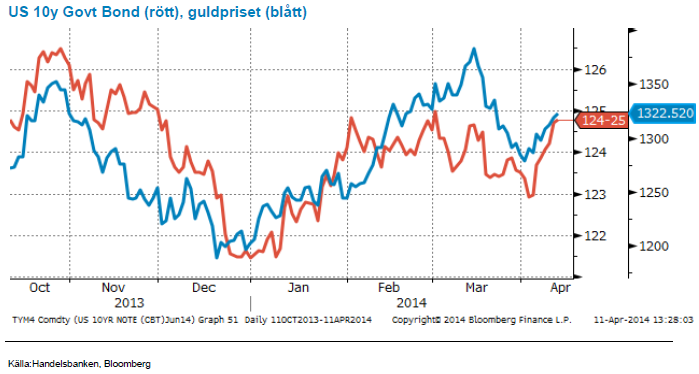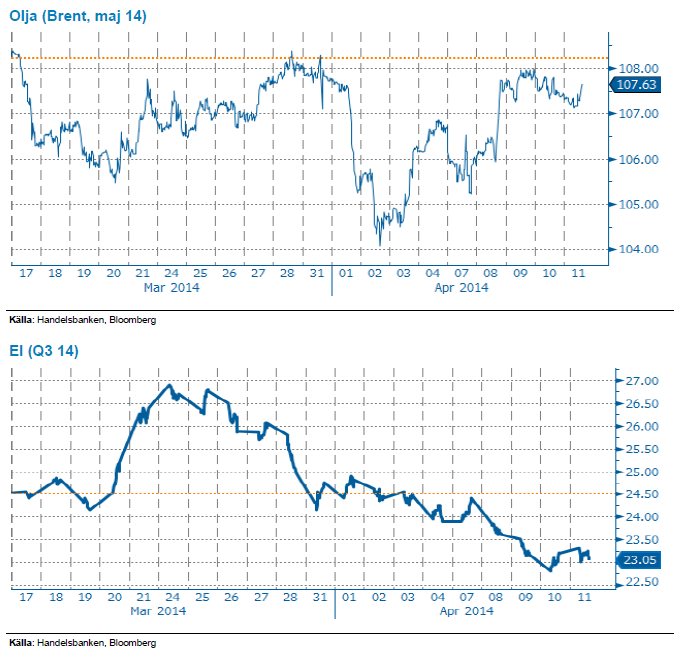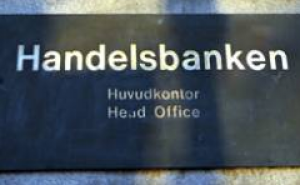Analys
SHB Råvarubrevet 11 april 2014

 Råvaror allmänt: Upp till bevis!
Råvaror allmänt: Upp till bevis!
Efter flera månader av oväntat svag amerikansk statistik som har skyllts på vädret är till slut det amerikanska makroöverraskningsindexet på nivåer där det ofta vänt högre. Väderleken får dessutom anses vara normal. Att marknaden tidigare inte tagit till sig den utbredda makrosvagheten förklaras med att en rejäl aktivitetstuds är att vänta när väl vädret normaliseras, men hur mycket uppdämd efterfrågan ligger i korten egentligen?
USA-statistiken har fortsatt att överraska negativt, trots den mer gynnsamma väderleken. Inköpschefsindex ISM var något sämre än väntat. Sysselsättningsstatistiken för mars månad var även den sämre än väntat. Speciellt relevant var lönetillväxten som bromsade in. Bilförsäljningen var förvisso stark och andas att lagerneddragningen i industrin inte behöver bli lika allvarlig, men någon större ketchupeffekt i efterfrågan går det inte ännu att tala om.
Med överraskningsindex på dessa nedtryckta nivåer (bild nedan) borde ekonomernas förväntningar vara så nedtryckta att data svårligen kan överraska negativt. Den utbredda förekomsten av väderursäkter under det första kvartalet kan dock utgöra ett tecken på att förväntansbilden inte är tillräckligt lågt ställd riktigt ännu. Medan nivån på överraskningsindex antyder att en förbättring är på gång noterar vi att mönstret under åren 2010 till 2013 andas att överraskningsindex brukar bottna ut först under sommaren.
Under veckan kom Kinas importdata för råvaror under mars månad. Relativt oförändrad från februari och klart lägre än rekordimporten i slutet av 2013 och jan 2014. Importen ligger i linje med vårt case där Kina just nu befinner sig i en tillverkningsintensiv period då råvaror tas från lagerhus och omsätts till färdiga bilar, tvättmaskiner och allt annat som ingår i industriproduktionen.
Basmetaller: Favoritmetallen fortsätter att leverera
Sedan vi publicerade vårt nickel case den 1 april har priset (LME:s 3 mån) stigit med dryga 10 %, upp hittills i år med hela 25 %. Indonesiens exportstopp av oförädlad nickelmalm börjar nu påverka utbudet, men även oro för bortfall från Ryssland oroar. Kinas lager av malmen börjar sina och även LME:s lager av nickel faller, ned 1,8 % på veckan vilket är den största nedgången sedan juni 2012. Det har dock ryktats att man i Indonesien skulle lätta på sitt exportförbud, i syfte att stimulera sysselsättningen inför stundande val. De aktörer vi talar med i den fysiska nickelmarknaden vittnar samtidigt om att det blir allt svårare att köpa nickel för leverans. Vi håller därför fast vid vår positiva syn på nickel även efter från dessa prisnivåer.
Ädelmetaller: Guldet fortfarande Fed-styrt
Som vi beskrev i förra veckans brev sitter nya Fed-chefen Janet Yellen på nyckeln till prisutvecklingen på guldet. Beskedet i början av mars tolkades som oväntat hökaktigt, vilket ledde till stigande amerikanska räntor och fallande ädelmetallpriser.
Sedan dess har budskapet ”mjukats till” en hel del, en utveckling som förstärktes i denna veckans publicerade mötesprotokoll från Fed. Amerikanska räntor har fallit en hel del, och guldpriset har börjat stiga igen. Sedan förra veckan noterar vi prisuppgångar på ädelmetallerna och guldet har nu drygt fyra procent kvar till årshögstanoteringen. Vi bibehåller vår positiva syn men håller stort fokus på Fed och ränteutvecklingen. Nästa Fed-möte är 29-30 april.
Energi: Elpriset fortsätter sin väg ned
Elmarknaden och elkontraktet Q3 2014 faller ytterligare 3 procent under veckan till EUR 23.05 och vi står fast vid vår negativa vy. Även om utsläppsrätterna, gas- och kolkontrakten stigit något går det inte att bortse från de extremt våta vädret som ger förutsättningar för ytterligare nedgång på kontraktet. Ser vi till den kommande tiodagarsperioden kan det bli riktigt stora energileveranser uppemot 10 TWh vilket i så fall skulle stärka energibalansen till närmare 1.5 TWh + efter vecka 16. Det är väl egentligen bara gasen som stigit på oro kring utvecklingen i Ukraina/Ryssland och därmed också givit stöd åt det tyska elpriset som kan lyftas fram som en liten orosparameter men just nu balanseras detta klart av vädret.
Oljan fortsätter att vara rangehandlad. Libyens rebeller börjar öppna upp för export från de två sista av de hamnar som de kontrollerar vilket pressar priset men Putins hotfulla tonläge leder till högre pris. Det är alltså riskpremien som handlas upp och ner men underliggande fundamenta har förbättrats i och med bättre utsikter för Libyen att komma tillbaka till export.
Livsmedel: Kaffepriset vänder upp igen
Terminspriserna på kaffe är tillbaka på årshögsta och handlas åter över 2 dollar/Ib. Priserna föll tillbaka efter vinsthemtagningar och viss nederbörd i Brasilien under mars månad. Veckans prislyft speglar återigen bristen på regn för de kommande veckorna men också minskade Robustalager. Dessutom hotar El Niño kommande skörd, där stora mängder nederbörd kan försämra kvalitén på bönorna. Vi tror fortsatt på en volatil marknad.
Efter den ovanligt kalla vintern i USA och uteblivet regn i Brasilien, väntas årets apelsinskörd bli den lägsta på 29 år. Brasilien som världens största – och Florida som världens näst största apelsinproducent har drabbats hårt i år. I veckan steg terminspriserna på apelsinjuice ytterligare till två-årshögsta efter att amerikanska jordbruksdepartementet, USDA sänkte den amerikanska apelsinodlingens estimat för mars månad för 2013/14 jämfört med föregående månad. I Florida härjar den bakteriella citrussjukdomen även kallad Citrus greening som får apelsinerna att skrumpna och lossna innan de hunnit mogna. Och i Brasilien har torkan slagit hårt mot apelsinerna. Om Citrus greening får spridning kan det påverka flera års skördar, varför vi ser viss risk på uppsidan.
Vete avslutar veckan i princip oförändrat efter en kortare uppgång under veckan. I onsdagens rapport från det amerikanska jordbruksdepartementet, USDA, justerades globalt utgående lager av vete upp mer än väntat med 3 miljoner ton – vilket pressat priserna en del därefter. Generellt sett är de höstsådda grödorna i ett gott skick på det norra halvklotet, det största problemet har varit torkan för det amerikanska höstvetet – vilket dock fortfarande oroar men i alla fall lindrats. För tillfället ser det även ut som att mer regn kommer i nästa vecka. Marknaden kommer nu mest fokusera på väder och utsikter för ny skörd – vilket än så länge ser lovande ut. Vi fortsätter att tro på fallande vetepriser.
Handelsbankens råvaruindex (USD)
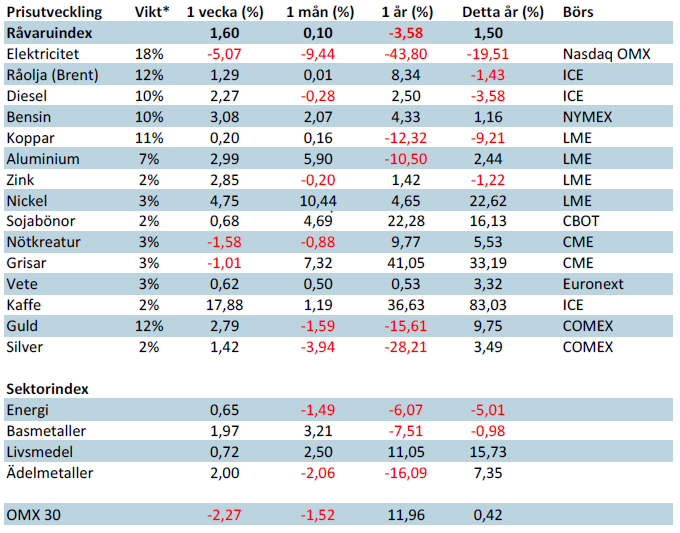
*Uppdaterade vikter från 29 november 2013
Handelsbankens råvaruindex består av de underliggande indexen för respektive råvara. Vikterna är bestämda till hälften från värdet av nordisk produktion (globala produktionen för sektorindex) och till hälften från likviditeten i terminskontrakten.
[box]SHB Råvarubrevet är producerat av Handelsbanken och publiceras i samarbete och med tillstånd på Råvarumarknaden.se[/box]
Ansvarsbegränsning
Detta material är producerat av Svenska Handelsbanken AB (publ) i fortsättningen kallad Handelsbanken. De som arbetar med innehållet är inte analytiker och materialet är inte oberoende investeringsanalys. Innehållet är uteslutande avsett för kunder i Sverige. Syftet är att ge en allmän information till Handelsbankens kunder och utgör inte ett personligt investeringsråd eller en personlig rekommendation. Informationen ska inte ensamt utgöra underlag för investeringsbeslut. Kunder bör inhämta råd från sina rådgivare och basera sina investeringsbeslut utifrån egen erfarenhet.
Informationen i materialet kan ändras och också avvika från de åsikter som uttrycks i oberoende investeringsanalyser från Handelsbanken. Informationen grundar sig på allmänt tillgänglig information och är hämtad från källor som bedöms som tillförlitliga, men riktigheten kan inte garanteras och informationen kan vara ofullständig eller nedkortad. Ingen del av förslaget får reproduceras eller distribueras till någon annan person utan att Handelsbanken dessförinnan lämnat sitt skriftliga medgivande. Handelsbanken ansvarar inte för att materialet används på ett sätt som strider mot förbudet mot vidarebefordran eller offentliggörs i strid med bankens regler.
Analys
Brent crude ticks higher on tension, but market structure stays soft

Brent crude has climbed roughly USD 1.5-2 per barrel since Friday, yet falling USD 0.3 per barrel this mornig and currently trading near USD 67.25/bbl after yesterday’s climb. While the rally reflects short-term geopolitical tension, price action has been choppy, and crude remains locked in a broader range – caught between supply-side pressure and spot resilience.

Prices have been supported by renewed Ukrainian drone strikes targeting Russian infrastructure. Over the weekend, falling debris triggered a fire at the 20mtpa Kirishi refinery, following last week’s attack on the key Primorsk terminal.
Argus estimates that these attacks have halted ish 300 kbl/d of Russian refining capacity in August and September. While the market impact is limited for now, the action signals Kyiv’s growing willingness to disrupt oil flows – supporting a soft geopolitical floor under prices.
The political environment is shifting: the EU is reportedly considering sanctions on Indian and Chinese firms facilitating Russian crude flows, while the U.S. has so far held back – despite Bessent warning that any action from Washington depends on broader European participation. Senator Graham has also publicly criticized NATO members like Slovakia and Hungary for continuing Russian oil imports.
It’s worth noting that China and India remain the two largest buyers of Russian barrels since the invasion of Ukraine. While New Delhi has been hit with 50% secondary tariffs, Beijing has been spared so far.
Still, the broader supply/demand balance leans bearish. Futures markets reflect this: Brent’s prompt spread (gauge of near-term tightness) has narrowed to the current USD 0.42/bl, down from USD 0.96/bl two months ago, pointing to weakening backwardation.
This aligns with expectations for a record surplus in 2026, largely driven by the faster-than-anticipated return of OPEC+ barrels to market. OPEC+ is gathering in Vienna this week to begin revising member production capacity estimates – setting the stage for new output baselines from 2027. The group aims to agree on how to define “maximum sustainable capacity,” with a proposal expected by year-end.
While the IEA pegs OPEC+ capacity at 47.9 million barrels per day, actual output in August was only 42.4 million barrels per day. Disagreements over data and quota fairness (especially from Iraq and Nigeria) have already delayed this process. Angola even quit the group last year after being assigned a lower target than expected. It also remains unclear whether Russia and Iraq can regain earlier output levels due to infrastructure constraints.
Also, macro remains another key driver this week. A 25bp Fed rate cut is widely expected tomorrow (Wednesday), and commodities in general could benefit a potential cut.
Summing up: Brent crude continues to drift sideways, finding near-term support from geopolitics and refining strength. But with surplus building and market structure softening, the upside may remain capped.
Analys
Volatile but going nowhere. Brent crude circles USD 66 as market weighs surplus vs risk

Brent crude is essentially flat on the week, but after a volatile ride. Prices started Monday near USD 65.5/bl, climbed steadily to a mid-week high of USD 67.8/bl on Wednesday evening, before falling sharply – losing about USD 2/bl during Thursday’s session.

Brent is currently trading around USD 65.8/bl, right back where it began. The volatility reflects the market’s ongoing struggle to balance growing surplus risks against persistent geopolitical uncertainty and resilient refined product margins. Thursday’s slide snapped a three-day rally and came largely in response to a string of bearish signals, most notably from the IEA’s updated short-term outlook.
The IEA now projects record global oversupply in 2026, reinforcing concerns flagged earlier by the U.S. EIA, which already sees inventories building this quarter. The forecast comes just days after OPEC+ confirmed it will continue returning idle barrels to the market in October – albeit at a slower pace of +137,000 bl/d. While modest, the move underscores a steady push to reclaim market share and adds to supply-side pressure into year-end.
Thursday’s price drop also followed geopolitical incidences: Israeli airstrikes reportedly targeted Hamas leadership in Doha, while Russian drones crossed into Polish airspace – events that initially sent crude higher as traders covered short positions.
Yet, sentiment remains broadly cautious. Strong refining margins and low inventories at key pricing hubs like Europe continue to support the downside. Chinese stockpiling of discounted Russian barrels and tightness in refined product markets – especially diesel – are also lending support.
On the demand side, the IEA revised up its 2025 global demand growth forecast by 60,000 bl/d to 740,000 bl/d YoY, while leaving 2026 unchanged at 698,000 bl/d. Interestingly, the agency also signaled that its next long-term report could show global oil demand rising through 2050.
Meanwhile, OPEC offered a contrasting view in its latest Monthly Oil Market Report, maintaining expectations for a supply deficit both this year and next, even as its members raise output. The group kept its demand growth estimates for 2025 and 2026 unchanged at 1.29 million bl/d and 1.38 million bl/d, respectively.
We continue to watch whether the bearish supply outlook will outweigh geopolitical risk, and if Brent can continue to find support above USD 65/bl – a level increasingly seen as a soft floor for OPEC+ policy.
Analys
Waiting for the surplus while we worry about Israel and Qatar

Brent crude makes some gains as Israel’s attack on Hamas in Qatar rattles markets. Brent crude spiked to a high of USD 67.38/b yesterday as Israel made a strike on Hamas in Qatar. But it wasn’t able to hold on to that level and only closed up 0.6% in the end at USD 66.39/b. This morning it is starting on the up with a gain of 0.9% at USD 67/b. Still rattled by Israel’s attack on Hamas in Qatar yesterday. Brent is getting some help on the margin this morning with Asian equities higher and copper gaining half a percent. But the dark cloud of surplus ahead is nonetheless hanging over the market with Brent trading two dollar lower than last Tuesday.

Geopolitical risk premiums in oil rarely lasts long unless actual supply disruption kicks in. While Israel’s attack on Hamas in Qatar is shocking, the geopolitical risk lifting crude oil yesterday and this morning is unlikely to last very long as such geopolitical risk premiums usually do not last long unless real disruption kicks in.
US API data yesterday indicated a US crude and product stock build last week of 3.1 mb. The US API last evening released partial US oil inventory data indicating that US crude stocks rose 1.3 mb and middle distillates rose 1.5 mb while gasoline rose 0.3 mb. In total a bit more than 3 mb increase. US crude and product stocks usually rise around 1 mb per week this time of year. So US commercial crude and product stock rose 2 mb over the past week adjusted for the seasonal norm. Official and complete data are due today at 16:30.
A 2 mb/week seasonally adj. US stock build implies a 1 – 1.4 mb/d global surplus if it is persistent. Assume that if the global oil market is running a surplus then some 20% to 30% of that surplus ends up in US commercial inventories. A 2 mb seasonally adjusted inventory build equals 286 kb/d. Divide by 0.2 to 0.3 and we get an implied global surplus of 950 kb/d to 1430 kb/d. A 2 mb/week seasonally adjusted build in US oil inventories is close to noise unless it is a persistent pattern every week.
US IEA STEO oil report: Robust surplus ahead and Brent averaging USD 51/b in 2026. The US EIA yesterday released its monthly STEO oil report. It projected a large and persistent surplus ahead. It estimates a global surplus of 2.2 m/d from September to December this year. A 2.4 mb/d surplus in Q1-26 and an average surplus for 2026 of 1.6 mb/d resulting in an average Brent crude oil price of USD 51/b next year. And that includes an assumption where OPEC crude oil production only averages 27.8 mb/d in 2026 versus 27.0 mb/d in 2024 and 28.6 mb/d in August.
Brent will feel the bear-pressure once US/OECD stocks starts visible build. In the meanwhile the oil market sits waiting for this projected surplus to materialize in US and OECD inventories. Once they visibly starts to build on a consistent basis, then Brent crude will likely quickly lose altitude. And unless some unforeseen supply disruption kicks in, it is bound to happen.
US IEA STEO September report. In total not much different than it was in January
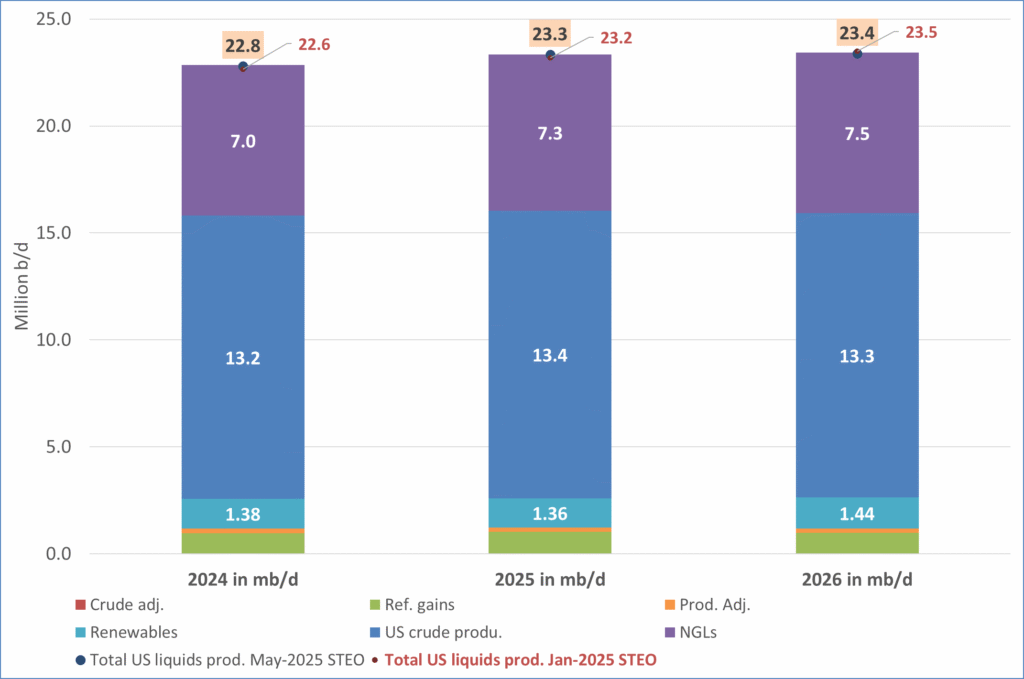
US IEA STEO September report. US crude oil production contracting in 2026, but NGLs still growing. Close to zero net liquids growth in total.
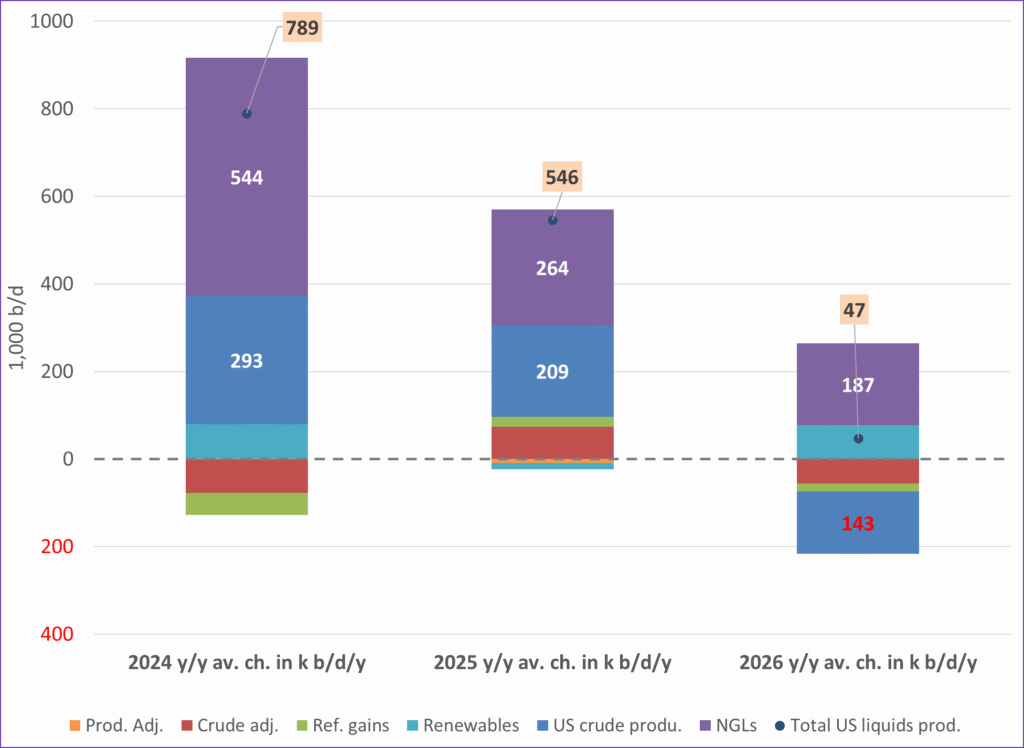
-
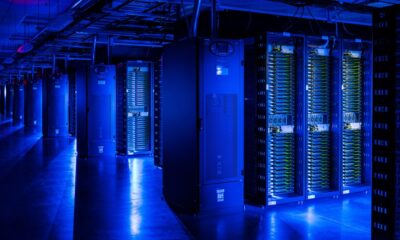
 Nyheter4 veckor sedan
Nyheter4 veckor sedanMeta bygger ett AI-datacenter på 5 GW och 2,25 GW gaskraftverk
-

 Nyheter4 veckor sedan
Nyheter4 veckor sedanAker BP gör ett av Norges största oljefynd på ett decennium, stärker resurserna i Yggdrasilområdet
-

 Nyheter4 veckor sedan
Nyheter4 veckor sedanEtt samtal om koppar, kaffe och spannmål
-

 Analys4 veckor sedan
Analys4 veckor sedanBrent sideways on sanctions and peace talks
-
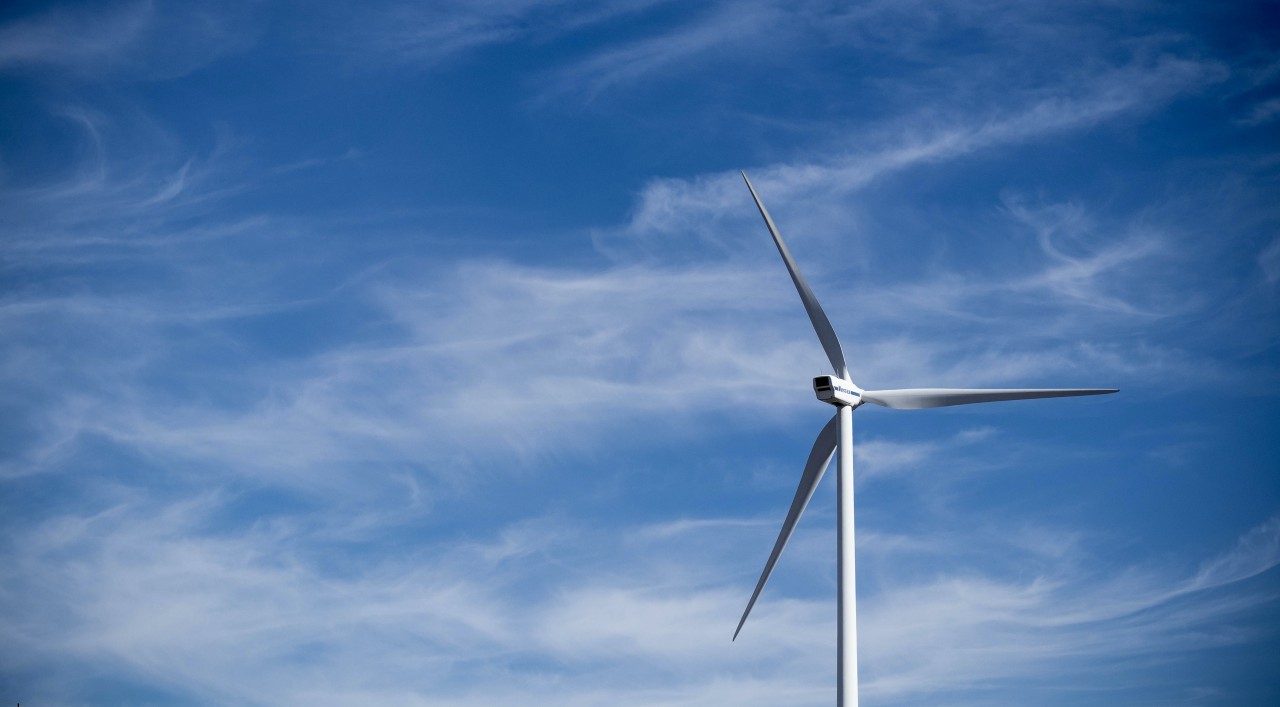
 Nyheter4 veckor sedan
Nyheter4 veckor sedanSommarens torka kan ge högre elpriser i höst
-

 Analys4 veckor sedan
Analys4 veckor sedanBrent edges higher as India–Russia oil trade draws U.S. ire and Powell takes the stage at Jackson Hole
-

 Nyheter3 veckor sedan
Nyheter3 veckor sedanMahvie Minerals är verksamt i guldrikt område i Finland
-

 Analys3 veckor sedan
Analys3 veckor sedanIncreasing risk that OPEC+ will unwind the last 1.65 mb/d of cuts when they meet on 7 September




